Peregrine
Mission #01
Slated to be among the first US landings since Apollo
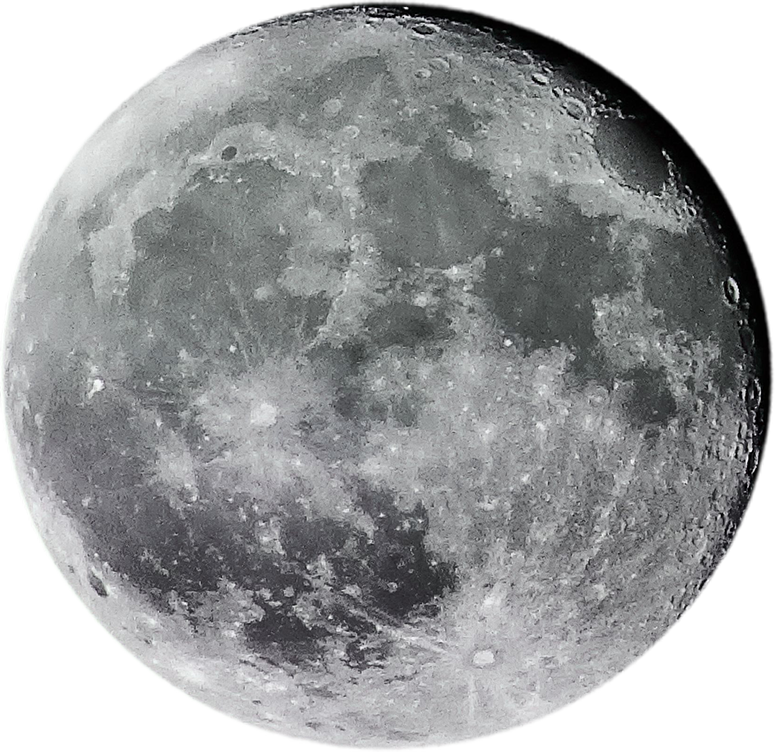

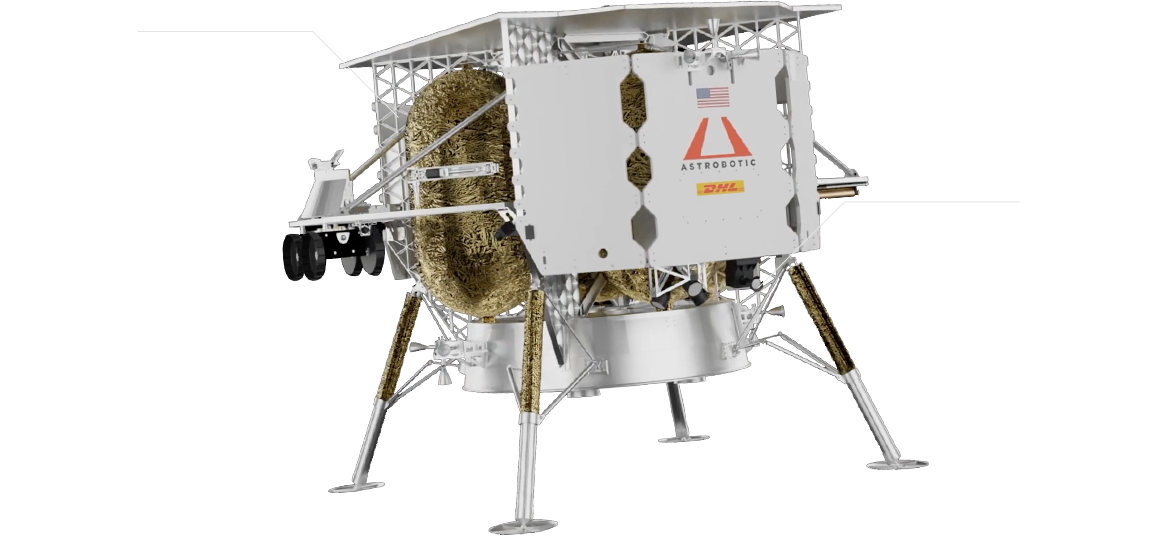
Payloads are securely mounted onto aluminum decks, with electronics, batteries and computers inside an enclosed area that provides shelter. Objects can be bolted on top of a deck for views of the horizon and sky, or below for views of the lunar surface.
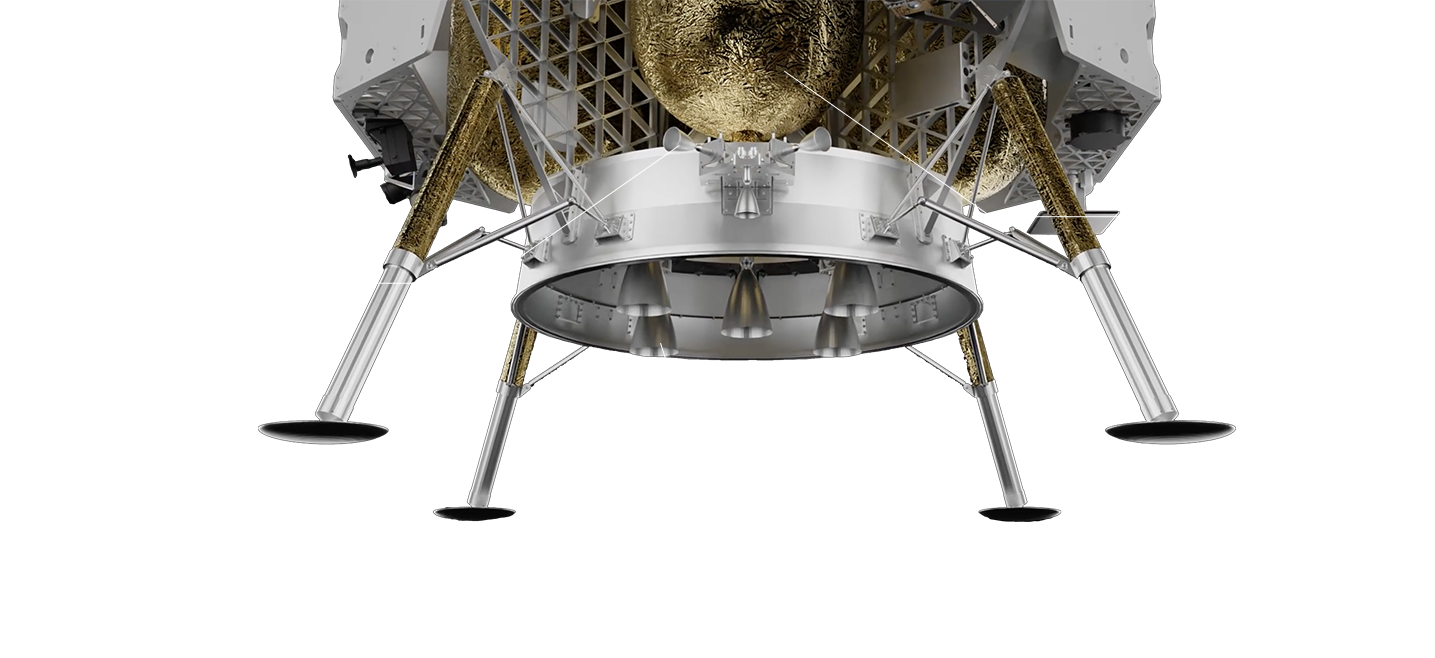
The Peregrine propulsion system features five main engines and twelve Attitude and Control System (ACS) engines powered by a pressure-fed hypergolic bipropellant, which does not require ignition because the fuel and oxidizer combust on contact. The system features a proven hydrazine derivative, Mono-Methyl-Hydrazine (MMH), as the fuel. The oxidizer is a solution of nitric oxide in dinitrogen tetroxide / nitrogen dioxide, 25% Mixed Oxides of Nitrogen (MON-25).
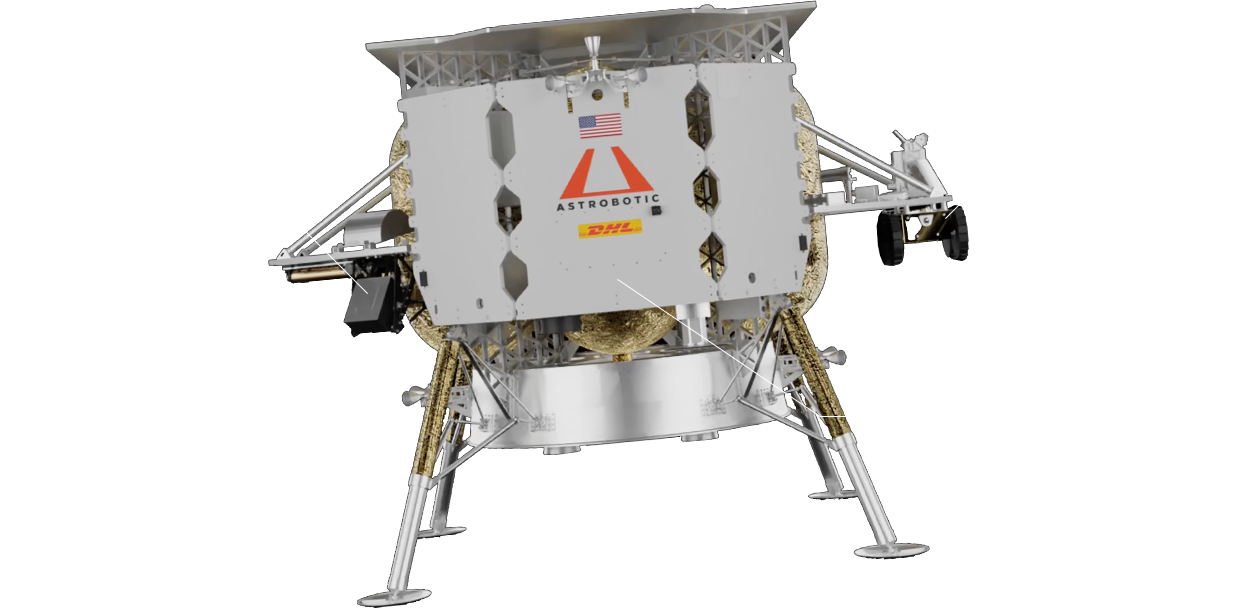
Peregrine uses a high-powered, flight heritage transponder and a combination of low and medium gain antennas to relay data between the payload customer and their payload throughout the mission. The lander-payload connection is provided via Serial RS-422 or SpaceWire for wired communications and a WLAN modem for wireless communications with deployed payloads such as rovers.

Peregrine provides 28 volt operational and heater power to payloads throughout the mission. It uses a panel of triple-junction solar cells to generate power and a space-grade lithium-ion battery to store energy. The solar panel is pointed towards the Sun whenever possible to provide continuous power generation, while the battery is utilized when the Sun is not visible or for quick discharge activities.
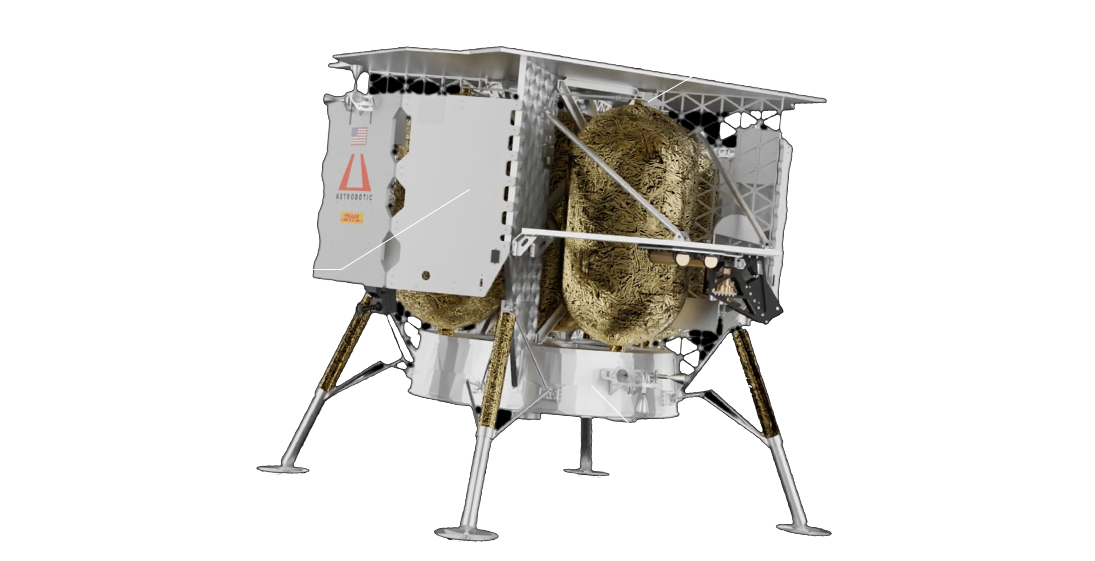
Astrobotic accepted small personal mementos for inclusion on Peregrine Mission One. Items from around the world will be stored aboard Peregrine on the Moon for centuries to come. From photographs and novels to student work and a piece of Mount Everest — life’s most meaningful moments will be forever linked with our nearest celestial neighbor.
The Journey
Latest Update: 04/01/2024 12:00 pm
Location: Pittsburgh, PA
Latest Update: 04/01/2024 12:00 pm
Location: Pittsburgh, PA
Latest Update: 04/01/2024 12:00 pm
Location: Pittsburgh, PA
Latest Update: 04/01/2024 12:00 pm
Location: Pittsburgh, PA
Latest Update: 04/01/2024 12:00 pm
Location: Pittsburgh, PA
Latest Update: 04/01/2024 12:00 pm
Location: Pittsburgh, PA
Latest Update: 04/01/2024 12:00 pm
Location: Pittsburgh, PA
Latest Update: 04/01/2024 12:00 pm
Location: Pittsburgh, PA
See What
Is Aboard
[Tap on a logo for information]

Astrobotic USA
Standalone Terrain Relative Navigation (TRN) sensor. TRN will enable spacecraft to perform landings on planetary surfaces with an unparalleled accuracy of less than 100 meters.

LINX-UNAM, together with Agencia Espacial Mexicana (AEM)
The first Latin American scientific instrument to the surface of the Moon. The payload consists of five small robots that will be catapulted onto the lunar surface.

The Arch Mission Foundation USA
Designs, builds, delivers, and maintains curated, long-term archives that are housed in specially designed devices called Arch Libraries, or Archs.

Celestis
Celestis is the first company to have successfully conducted Memorial Spaceflight Missions. Elysium Space: Providing lunar memorial services to deliver a symbolic portion of remains to the surface of the Moon.

DLR
The German Aerospace Center (DLR) joins Peregrine Mission One to land a special German-built radiation detector. It will measure key radiation data on the flight to the Moon and on the lunar surface.

Elysium Space
Providing lunar memorial services to deliver a symbolic portion of remains to the surface of the Moon.

IRIS Lunar Rover
Carnegie Mellon University is developing the Iris rover for Astrobotic’s inaugural lunar mission. CMU is also a subcontractor on Astrobotic’s MoonRanger lunar rover mission.

Lunar Mission One
Gives everyone on Earth the chance to make their mark on the Moon and is sending the first digital storage payload to the Moon.

Moon Ark
An epochal collaborative space project at Carnegie Mellon University, embodies the arts, humanities, sciences, and technologies in a set of intricately designed objects.

Nasa USA
The Laser Retroreflector (LRA) designed to use reflected laser light from Earth to precisely determine the location of the lander.








